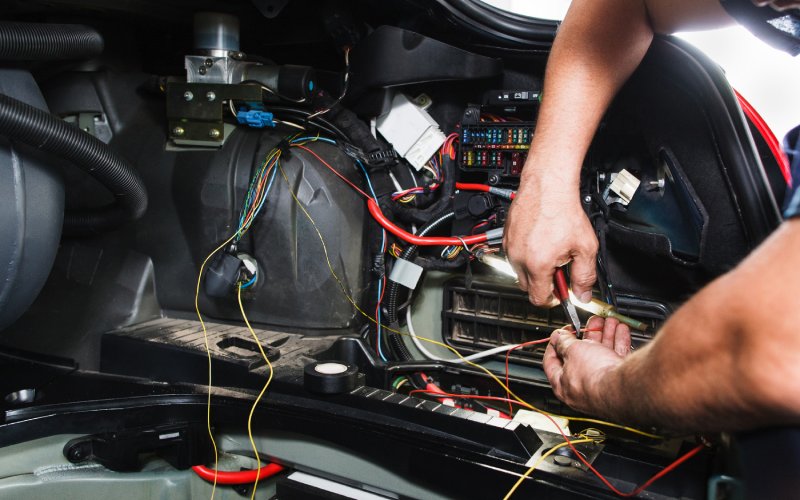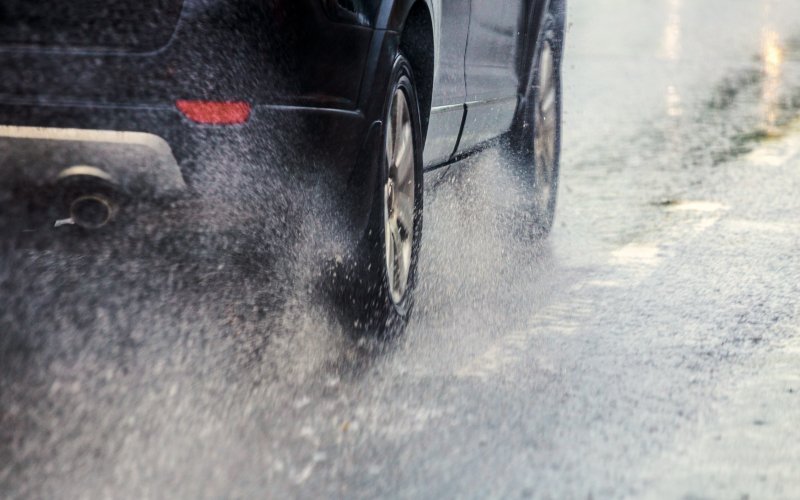Tips To Reduce Failure-Inducing Wear in Automotive Wiring

Automotive wiring issues are a top cause of vehicle breakdowns and electrical failures. If you are responsible for a fleet, manage a high-performance garage, or design vehicles, you understand that one faulty wire can halt progress and jeopardize safety. You need actionable information to reduce risks, limit downtime, and increase reliability. These tips to reduce failure-inducing wear in automotive wiring will help you keep your operations running smoothly.
Why Automotive Wiring Fails
Automotive wiring faces relentless challenges. Vibrations, temperature extremes, moisture ingress, road salt, and continual electrical loading cause strain. Add in the demand for more electronic systems, tighter spaces, and higher amperage, and the risk of wire wear increases. These factors compromise insulation integrity, expose conductors, and trigger shorts, voltage drops, or even fires. Time and time again, failures trace back to easily preventable causes, and effective prevention is rooted in direct control of three critical areas: environment, hardware, and routine action.
Environmental Controls Lead to Longer Wire Life
Corrosive environments—including humidity, salt, and chemical exposure—accelerate the breakdown of wiring insulation and promote conductor oxidation. You must scrutinize every potential exposure point and seal firewall pass-throughs completely, using grommets made of materials rated for automotive use.
Keep underbody wiring clear of spray paths from wheels and reroute harnesses well above splash zones. Where this cannot be done, use flexible conduit and tape wraps specifically manufactured to withstand oily, salty, and wet conditions. Avoid generic spiral wrap or loosely fitted tubing, which slides and fails to protect wires from abrasion and water tracking.
Temperature presents another risk factor. Place wiring as far as possible from exhausts, engine blocks, and forced-induction components. Use reflective sleeves or high-temperature jackets for wires routed near high-heat sources. Poor heat dissipation leads to insulation breakdown and brittle copper.

Hardware Selection Directly Impacts Longevity
Using improper terminals and connectors is a common, expensive mistake. Select connectors with robust seals and locking systems. For harsh applications, fully-sealed connectors with positive latching, like 7-pin electrical connectors, control both ingress and vibration stress. Do not cut corners with push-fit or economy connectors, especially in critical circuits such as lights, fuel injection, and safety systems.
Wire gauge choice also matters. Undersized wire may pass initial current checks but will fail when loaded for long periods, causing heat buildup and insulation degradation. Always match wire size to sustained current, not just peak demands. Follow manufacturer charts, adjusting for ambient temperature and expected cable routing length.
Use terminals designed for automotive vibration environments. Choose crimp terminals with wide, deep barrel crimps over solder joints—proper automotive crimps resist both mechanical and thermal cycling.
Proper Routing Prevents Failure From Movement
Improper routing puts wires in areas where failure can strike. Harnesses routed across sharp edges or moving parts will fail early, so route wires securely along factory paths, using existing anchors and P-clips. Where new runs are needed, anchor at intervals short enough to stop sagging, and look for existing vibration patterns and avoid parallel runs along major vibration sources.
Beware of over-tightened zip ties, which slice into the insulation over time. Use soft-edged, appropriately sized cable ties, and avoid metal clamps making direct contact with wire jackets. Introduce slack where needed for flexible movement, but do not permit wires to whip or rub against surfaces.
Twist pairs and bundle related wires for added EMI resistance, and shield signal wires running near high-current carriers such as alternators or starter cables. For every wire that crosses a hinge point, such as a trunk lid or door, use specific high-flex cable and reinforce with strain relief boots. Door wiring remains a top failure point that can be addressed with smarter materials and better physical support.
Inspection and Maintenance Catch Early Signs
Most wiring wear is gradual and detectable before it causes critical failure. Schedule visual inspections every maintenance cycle. Look for darkened spots on insulation, green corrosion, cracked jackets, and deposits around connectors. Do not ignore minor fluid leaks—these nearly always find their way into harnesses and connectors, accelerating breakdown.
If possible, use an infrared camera to spot high-resistance joints. Thermal imaging pinpoints connectors and terminals heating under load, which is a signal that wear is undermining reliability. Resistance checks at both ends of a circuit reveal issues that visual checks may miss. For key safety systems, periodic current draw testing under actual operating conditions can catch subtle, soon-to-fail connections.
Intervene immediately when early warning signs appear. Replace suspect sections with wire of the same rating and insulation. Never twist and tape as a repair, even temporarily. Use heat-shrink, adhesive-lined connectors to ensure protection against future exposure. If a wire shows signs of overheating, investigate the circuit for underlying overdraw rather than simply replacing the wire.

Material Choices That Multiply Reliability
Higher-grade wire and insulation pay off over the life of any vehicle. Specify crosslinked polyethylene (XLPE) or Tefzel insulation for new builds where exposure and temperature risk are high; PVC insulation may suffice for protected interior runs but is inadequate for underhood, underbody, or exterior applications.
Insist on tinned copper wire where corrosion or moisture exposure exists. Bare copper will oxidize quickly, especially where jacket nicks or microcracks allow ingress. Where possible, shield critical wires with armor braid or spiral steel wrap, especially in off-road and heavy-industry vehicles.
If you must repair connectors, use original equipment-style replacements. For ingress protection and locking retention, avoid universal kits unless they specifically meet or exceed the original specs. Select contact grease that resists wash-out and doesn’t gum up connectors over time.
Training and Documentation Drive Consistency
Failure to train staff in correct wiring procedures directly leads to future failures. Every technician in your organization should understand proper crimp technique, connector assembly, correct routing methods, and the logic behind wire size selection. Use hands-on demonstrations, not just manuals.
Document every modification. Update wiring schematics immediately when making changes or retrofits. Proper labeling prevents errors during diagnosis or future modification, minimizing the chance of accidental cross-connection or overloading.
For any vehicle or system subject to frequent configuration changes, such as test vehicles or modular fleet platforms, create rigid procedures for adding, removing, or altering wiring. Limit additions to authorized personnel and insist on field-verified documentation of every change.
Technology Integration Reduces Human Error
Today’s automotive electrical systems increasingly rely on onboard diagnostics and controller area network (CAN) buses. Harness testing tools now include automated circuit verifiers and trace tools that confirm electrical integrity during and after installation. Use these instruments to validate new and existing wiring runs.
Modern vehicles benefit from continuous monitoring solutions that detect real-time impedance shifts, short circuits, or ground faults. Consider integrating wire health monitoring into your maintenance workflow for high-value or mission-critical fleets.
Immediate Action Leads to Long-Term Gains
These tips to reduce failure-inducing wear in automative wiring are not just advanced recommendations—put these immediately to work across your organization. Review your current wiring layouts, retrain your team, audit your material choices, and introduce consistent inspection routines. Each action cuts down on time, saves costs, and protects your brand’s reputation.
When you prioritize wiring integrity, you ensure your vehicles stay on the road and you prevent predictable failures from occurring.

You must login to post comments.